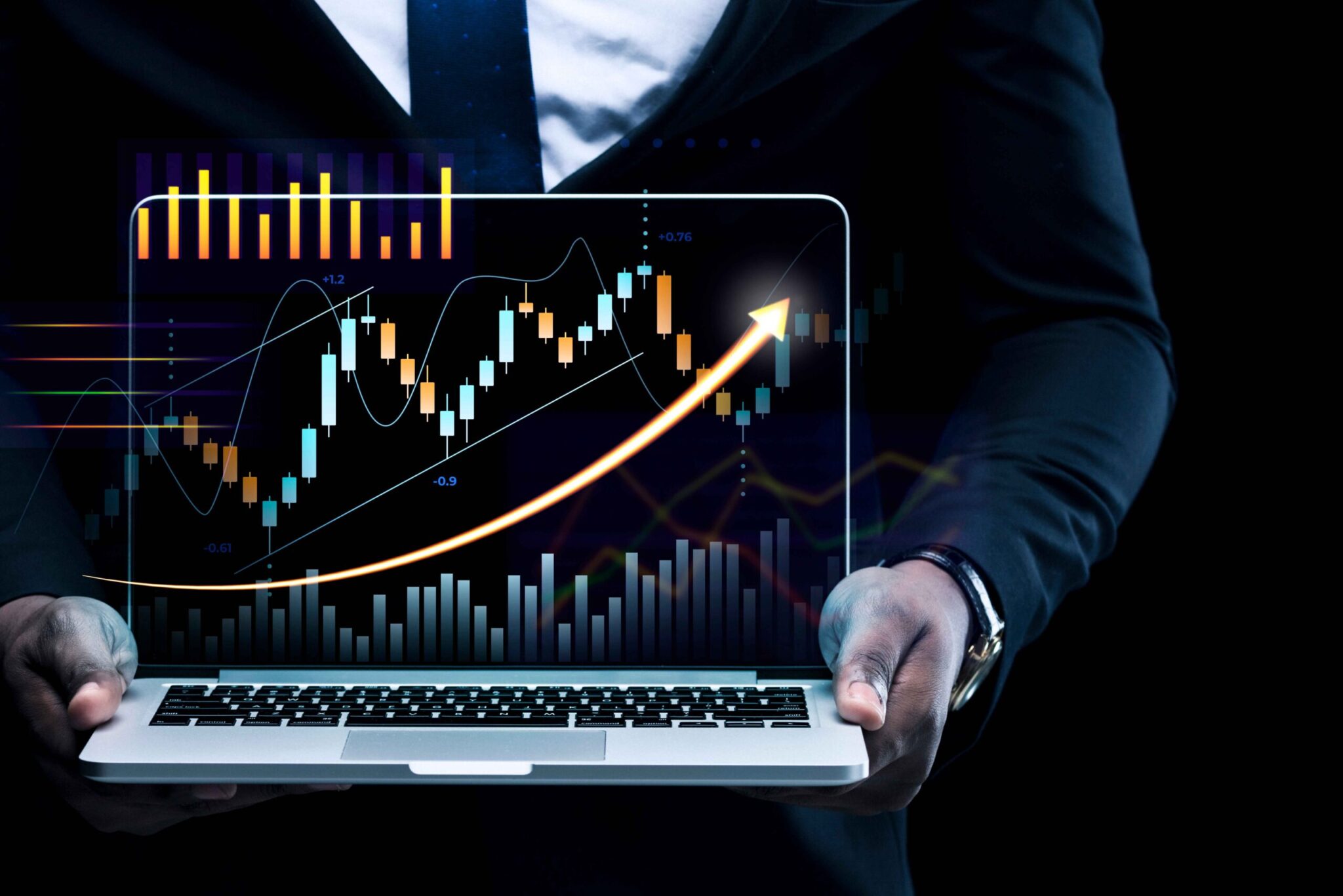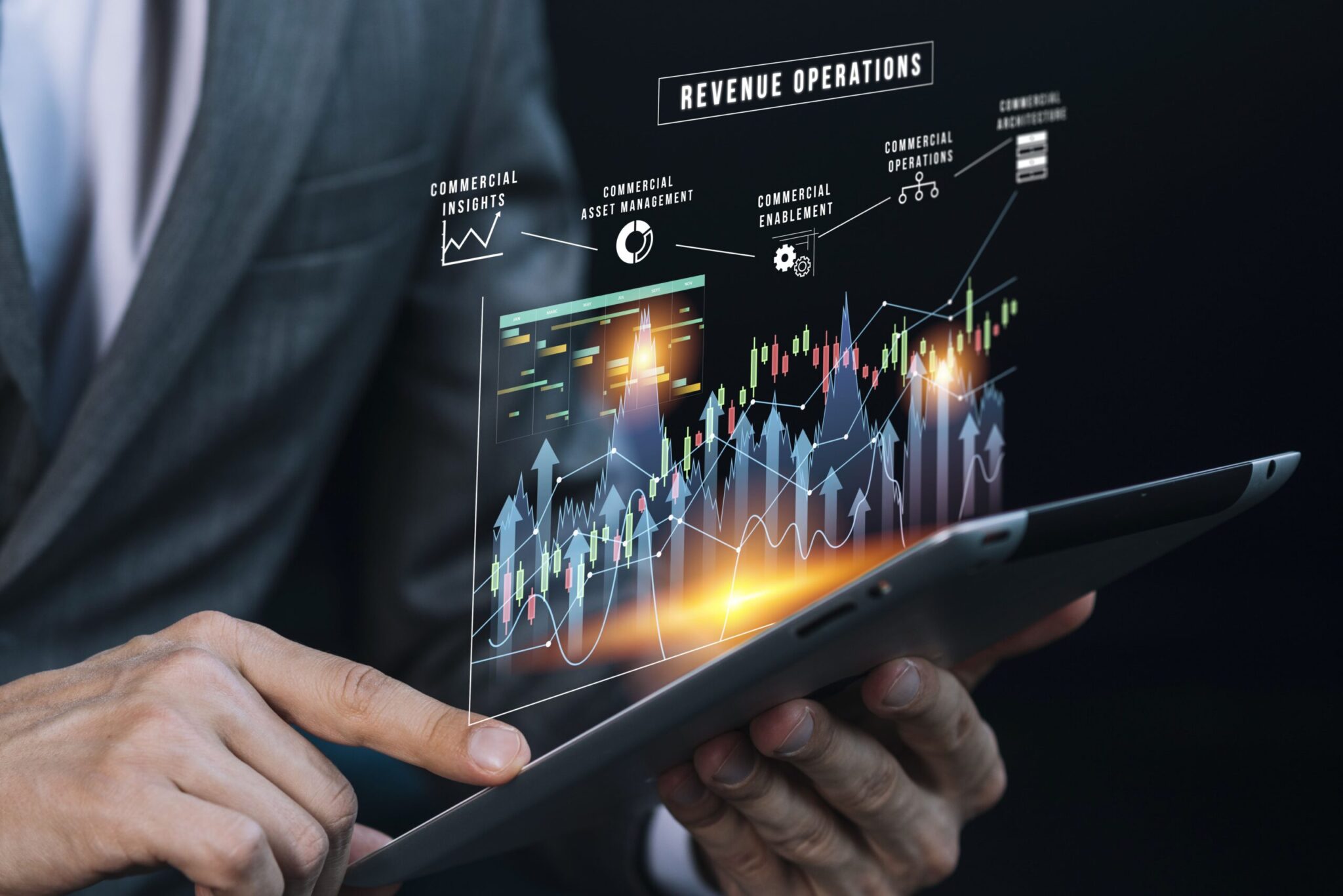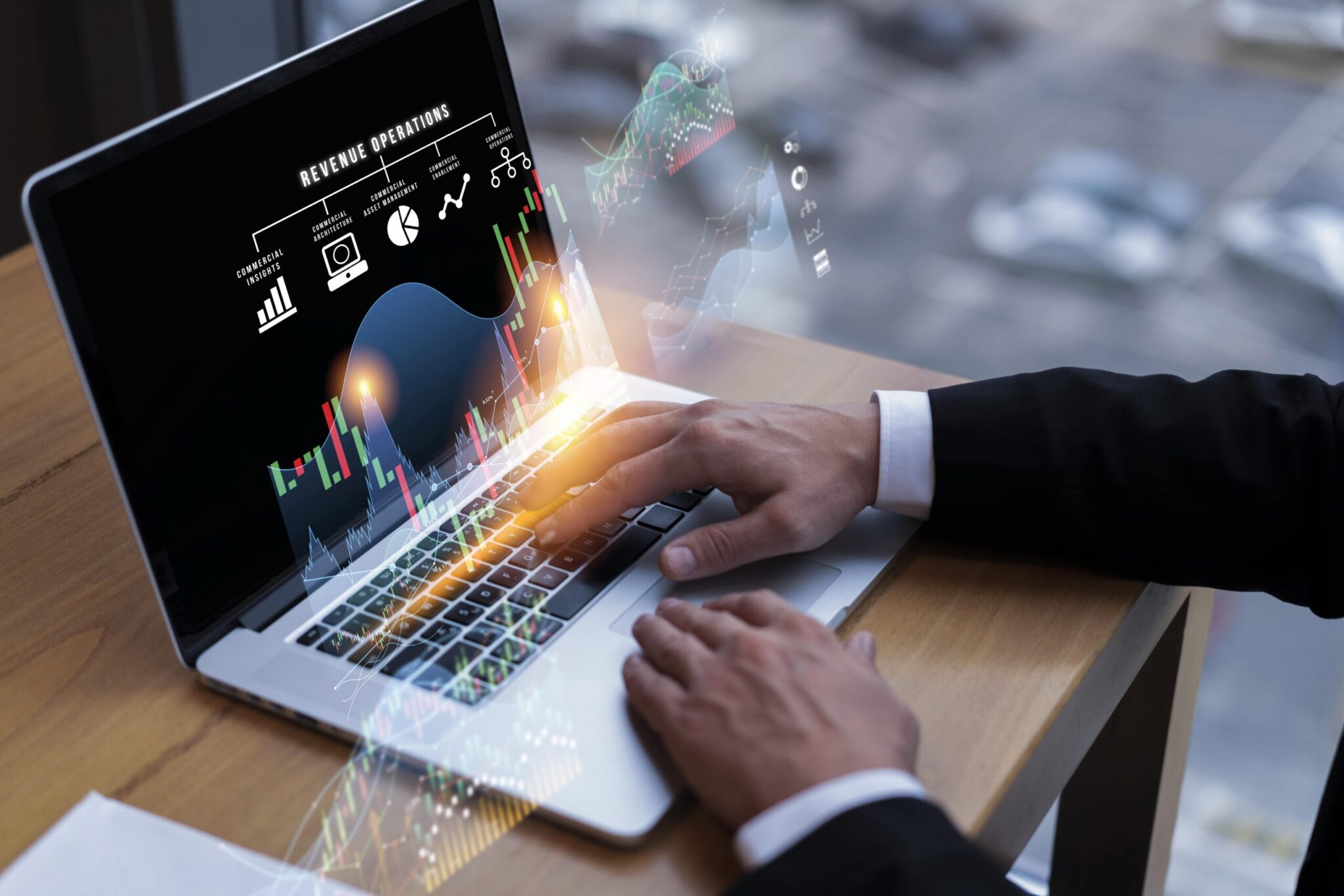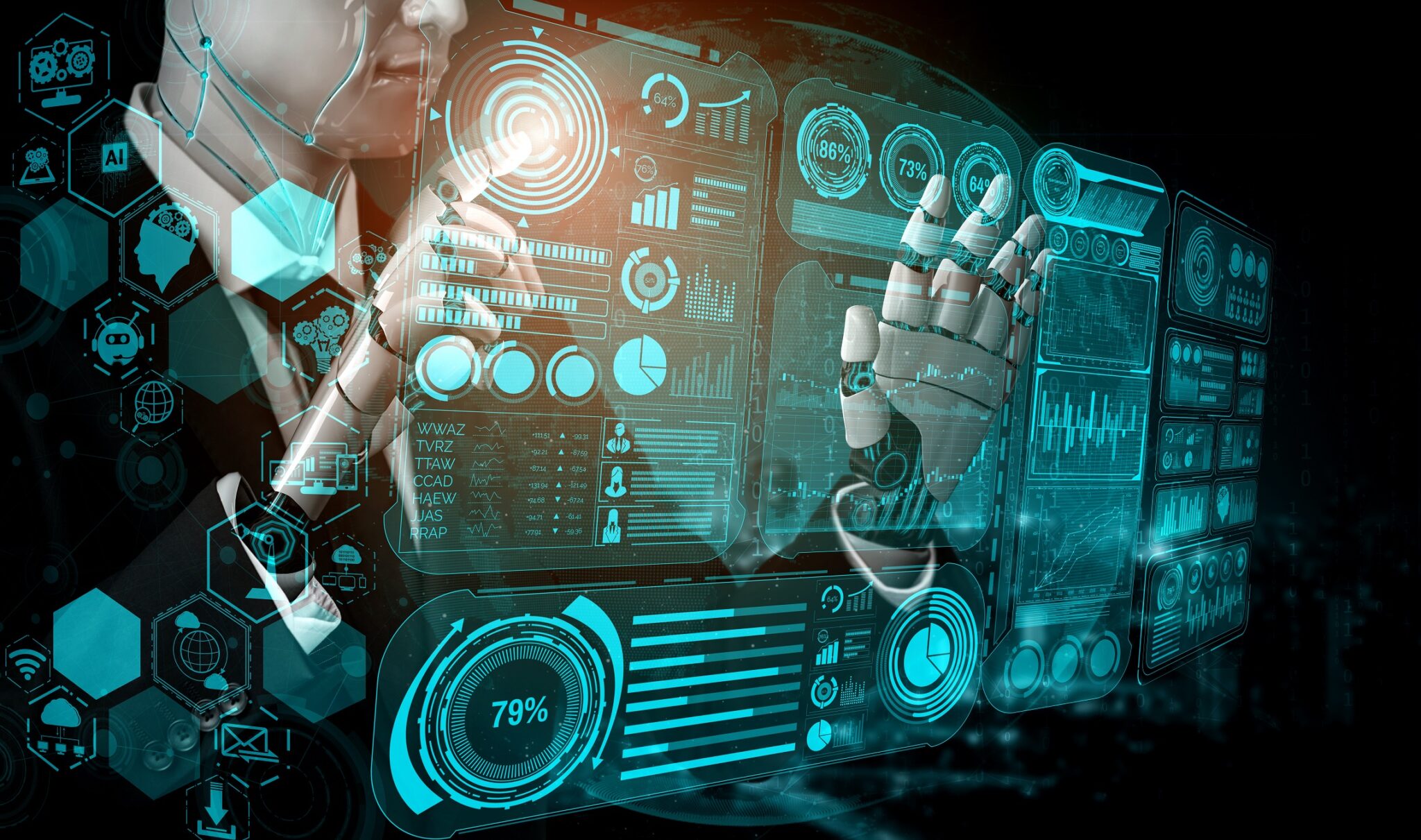Revolutionizing financial markets: The unprecedented impact of Artificial intelligence in trading
INTRODUCTION
In the ever-evolving landscape of financial markets, technological advancements have played a pivotal role in shaping the way traders operate. Among the myriad of innovations, Artificial Intelligence (AI) has emerged as a transformative force, revolutionizing the transformative industry. In the dynamic world of financial markets AI is the formidable force, reshaping the landscape of trading with unprecedented precisions and efficiency. Gone are the days of relying solely on human intuition and traditional algorithms today, AI algorithms analyze vast amount of data at speeds incomprehensible to the human mind, identify subtle patterns and trends that elude even the most seasoned traders. Machine learning models, such as neural networks and deep learning algorithms continuously adapt and evolve, learning from historical markets data to make real-time decisions. The marriage of advanced AI technologies and trading has not only automated mundane tasks but has also ushered in a new era of predictive analytics, risk management, and portfolio optimization. As Ai algorithms become increasingly sophisticated, the trading landscape is evolving into a realm where human and artificial intelligence collaborate to navigate the complexities of global financial markets, creating a synergy that maximizes returns and minimizes risks.

Understanding AI in Trading
Artificial Intelligence, a branch of computer science that enables machines to perform tasks that typically requires human intelligence, has found a natural fit in the complex world trading. AI in trading involves the use of sophisticated algorithms and models analyze vast amount of financial data, identify patterns, and make predictions. The primary goal is to enhance decision-making processes and optimize trading strategies. Understanding AI in trading requires delving into the intricate fusion of advanced technology and financial market. At its core, AI in trading involves the utilization of sophisticated algorithms and machine learning models to massive datasets, discern patterns, and execute trades with remarkable speed and accuracy. Unlike traditional trading methods, AI system can adapt and evolve based on real-time market conditions, continuously learning from their experiences. This dynamic capability enables traders to navigate the complexities of ever-changing markets more effectively. Moreover, AI enhances decision making processes by providing insights into potential market movements, optimizing risk management, and automating routine tasks.
However, comprehending AI in trading goes beyond the technical intricacies; it involves recognizing the symbiotic relationship between human expertise and artificial intelligence, where each contribute unique strength to create a more robust and responsive trading environment. In this landscape, understanding AI is not just about algorithms but also about appreciating the synergy between human intuition and machine intelligence that defines the future of trading.
Applications of AI in Trading

Traditional Trading
AI Powered algorithms execute trades at speeds impossible for human traders. These algorithms analyze market data, identify trends, and executes trades, based on predefined criteria. Machine Learning algorithms adapt and improve over time, learning from market condition and refining their strategies. Algorithmic trading, a cornerstone of AI in trading represents a paradigm shift in the way financial markets operate. At its essence, algorithmic trading employs pre-programmed algorithms to execute high frequency trades based on pre-defined criteria, reacting to market conditions at speeds unattainable by human traders. These algorithms shifts through vast datasets, identifying patterns, trends, and anomalies to make split seconds decisions. What sets algorithmic trading within the realm of AI apart is its capacity to adapt and refine its strategies autonomously.
Predictive Analytics
AI models analyze historical and real-time market data to make predictions about future price movements. This allows traders to make informed decisions and anticipate market trends. Predictive analytics can be applied to various financial instruments, including stocks, currencies, and commodities. Predictive analytics, a pivotal components of AI in trading revolutionizing the financial landscape by harnessing the power of data to foresee market trends and potential price movements. Through sophisticated algorithms and machine learning models, predictive analytics analyzes historical market data, identifying subtle patterns and correlations that elude traditional analytical methods. Predictive analytics not only aids in anticipating market movements but also plays a crucial role in risk management, helping traders proactively mitigate potential downstairs.
Risk Management
AI tools access and manage risk by analyzing market conditions and predicting potential fluctuations. This helps traders implement risk mitigation strategies and make more informed decisions, reducing the likelihood of substantial losses. In the ever-shifting landscape of financial markets, risk management takes on a new dimensions with the integration of Artificial Intelligence (AI) in trading. AI brings a sophisticated and proactive approach to risk management, leveraging advanced algorithms and machine learning models to access and mitigate potential threats. This system analyze historical market data, identify patterns, and dynamically adjust trading strategies to respond to changing conditions. AI in risk management goes beyond traditional methods, offering real-time monitoring and adaptive responses to minimizes exposure.
Sentiment Analysis
Natural Language Processing (NLP) algorithms analyze news articles, social media, and other sources to gauge market sentiments. Understand the sentiment of market participants can provide valuable insights into potential market movements. Sentiment analysis a cornerstone of AI in trading, introduces a fascinating dimensions by delving into the realm of emotions and perceptions within financial markets. This innovative approach employs advanced algorithms and natural language processing to analyze vast amount of textual data such as news articles, social media posts, and financial reports to gauge the prevailing sentiments among market participants. By deciphering whether the overall sentiment is bullish, bearish, or neural, AI system can provide traders with valuable insights into potential market movements.
Benefits of AI in Trading

Efficiency
AI-Driven algorithms can process vast amount of data in real-time, making split-seconds decisions and executing traders at speeds unattainable by human traders. This efficiency is crucial in markets where milliseconds an make the difference between profit and loss. Efficiency stands as a paramount benefit in the realm of AI in trading, transforming the dynamics of financial markets. Artificial Intelligence, with its swift data processing capabilities and algorithmic precision, revolutionizes the speed and accuracy of trading operations. Automation of routine tasks, coupled with real-time analysis of vast datasets, not only expedites decision making processes but also enables traders to capitalize on fleeting market opportunities that might elude human perception. AI system continuously learning and adapting enhance efficiency by optimizing trading strategy based on historical and real-time market data.
Data Analysis
AI excels at analyzing large datasets, uncovering patterns, and extracting valuable insights. This enables traders to make data-driven decision based on a comprehensive understanding of market dynamics. The profound benefit of AI in trading are epitomized by its transformative impact on data analysis. In the intricate tapestry of financial market, where information is paramount, AI brings a revolutionary approach to deciphering complex datasets. Advanced Algorithms and Machine Learning models navigate through vast amount of historical and real-time data with a level of precision that surpass traditional methods. This heightened analytical capability allows for the identification of subtle patterns, correlations and trends that may elude human observations. In the benefit of AI in trading, the prowess of data analysis becomes a cornerstone, enabling traders to navigate the complexities of financial market with unparalleled acuity and foresights.
Adaptability
Machine learning algorithms adapt to changing market conditions and continuously improve their performance. This adaptability allows traders to stay ahead of the curve and adjust their strategies in responses to evolving market trends. Adaptability emerges as a cornerstone in the constellation of benefits that AI brings to tradings. In the dynamic realm of financial markets, characterized by constant flux and unforeseen challenges, AI exhibits a remarkable capacity to adapt and evolve. Machine learning algorithms embedded within trading system continuously adsorb new data, learning from market trends and adjusting strategies in real-time. This adaptability ensures that trading algorithms remains responsive to changing conditions, mitigation risks and seizing emerging opportunities.
Challenges and Considerations

Data Quality and Bias
The effectiveness of AI models heavily depends on the quality the data they are trained on. Biases in historical data can lead to skewed predictions and undesirable outcomes. Ensuring data accuracy and addressing biases are ongoing challenges in AI-Driven trading. Navigating the challenges of AI in trading necessitates the nuances understanding of data quality and potential biases. The reliance on vast datasets is a double edged sword; while it provides a rich source for training machine learning models; it also introduced the risk of skewed results due to data inaccuracies or inherent biases. Ensuring the quality of data becomes a paramount consideration as inaccuracies can lead to flawed predictions and misguided trading decisions. Moreover, the challenge of mitigating biases embedded in historical data is crucial.
Regulatory Compliance
The use of AI in trading raises regulatory concerns, particularly regarding transparency, accountability, and potential market manipulation. Striking a balance between innovation and regulatory compliance is an ongoing challenge for the financial industry. Navigating the landscape of AI in trading comes with the critical challenge of ensuring regulatory compliance. As artificial intelligence become integral to trading strategies regulatory bodies grapple with the need to establish frameworks that keep pace with technological advancements. Striking a balanced between fostering innovation and safeguarding market integrity becomes paramount. The opacity inherent in some AI models poses challenges in meeting transparency requirements, raising concerns about accountability and the potential for market manipulation.
Overreliance on Technology
Traders must be cautions not to become overlay reliant on AI Algorithms. WHile these tools enhance decision making, human intuition and judgement remain invaluable in navigating the complexities of financial markets. While AI in trading offers unprecedented advantages, the challenge of overreliance on technology looms as a potential pitfall. Traders, enticed by the speeds and efficiency of AI algorithms may be tempted to delegate decision making entirely to machines. This overreliance poses, risk at its may lead to a disconnect between human intuition and nuances of market dynamics. In scenarios where algorithms encounters unforeseen circumstances or operate outside the parameters of their training data, human judgement becomes indispensable. Striking the right balanced between leveraging AI’s computational prowess and retaining human oversight is a delicate challenge.

The Future of AI in Trading
The trajectory of AI in trading points towards a future where technological advancements continue to redefine market dynamics. As Ai algorithms become more sophisticated, the role of human traders may shift from manual execution to overseeing and fine tuning AI strategies. Additionally the integration of blockchain technology and decentralized finance (DeFi) could further reshape the landscape, introducing new possibilities and challenges. the future of AI in trading holds the promise of a paradigm shift, where technological innovation and human insights converge to redefine the financial landscape. As AI algorithms continue to evolve, fueled by advances in machine learning and computational capabilities, they are poised to become even more adept at navigating the complexities of global markets. The integration of cutting-edge technologies, such as quantum computing and decentralized finance (DeFi) is likely to further amplify the speed and efficiency of trading system. Moreover, the future may seen an increased emphasis on ethical AI, with a focus on mitigating biases, ensuring transparency, and aligning with evolving regulatory frameworks.
Collaboration between financial institutions, technologists, and regulatory bodies will be instrumental in shaping an ecosystem that harnesses the transformative potential of AI while upholding market integrity. The rise of explainable AI models and the incorporation of novel data sources, such as satellite imagery and social sentiment, are indicative of a future where AI not only predict market movements but also provides deeper insights into the underlying forces at play. Ultimately, the future of AI in trading is one of the dynamic synergy, where human ingenuity and machine intelligence harmonized to navigate the ever-changing currents of the financial worlds.



